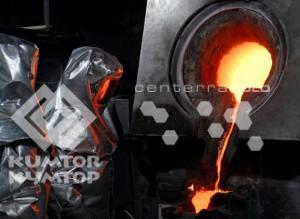During the First Eleven Months of 2011, Production at Kumtor Has Accounted for 55% of the National Industrial Output in Kyrgyzstan
published: 13 December 2011
 During the period between January and November, 2011, the national industrial output in Kyrgyzstan has grown by 24.1% as compared with the same period in 2010. The Kumtor mine’s production has accounted for 55% of the national industrial output in Kyrgyzstan, as reported today by the National Statistics Committee.
During the period between January and November, 2011, the national industrial output in Kyrgyzstan has grown by 24.1% as compared with the same period in 2010. The Kumtor mine’s production has accounted for 55% of the national industrial output in Kyrgyzstan, as reported today by the National Statistics Committee.
The Kyrgyz Republic has reportedly produced Soms 147,64.2 billion worth of industrial output (including goods and services). Minus Kumtor production, the Kyrgyz national industrial output would be Soms 66,180.9 billion.
“Despite a somewhat decrease in the industrial growth rates, as compared with the same period of 2001, which was due to the 20.8% decrease in the production of the Dore bars in November 2010 against what was produced in November 2011, production continues to grow.
“Production has grown in January-November 2011 largely due to the higher production of equipment (1.8-fold), special-purpose goods (2.7-fold), textile and apparel (1.5-fold), other nonmetal mineral goods (by 24.9%), as well as due to the generation and distribution of electric power, natural gas and water (by 20.9%).
“The growth of textile and clothing manufacture was due to a significant increase in the production of knitwear, sweaters, jumpers, pullovers, etc. at Legprom Association enterprises.
“As regards other nonmetal mineral goods, as compared with the same period of 2010, they include higher production of non-fire bricks (by 38.9%), cement (by 34%) and geoffered roofing slate (by 10.3%).
“The growth of generation and distribution of electric power, natural gas and water is largely due to higher generation of electric power (by 25%).
By Dmitry Denisenko
«Vecherny Bishkek»


